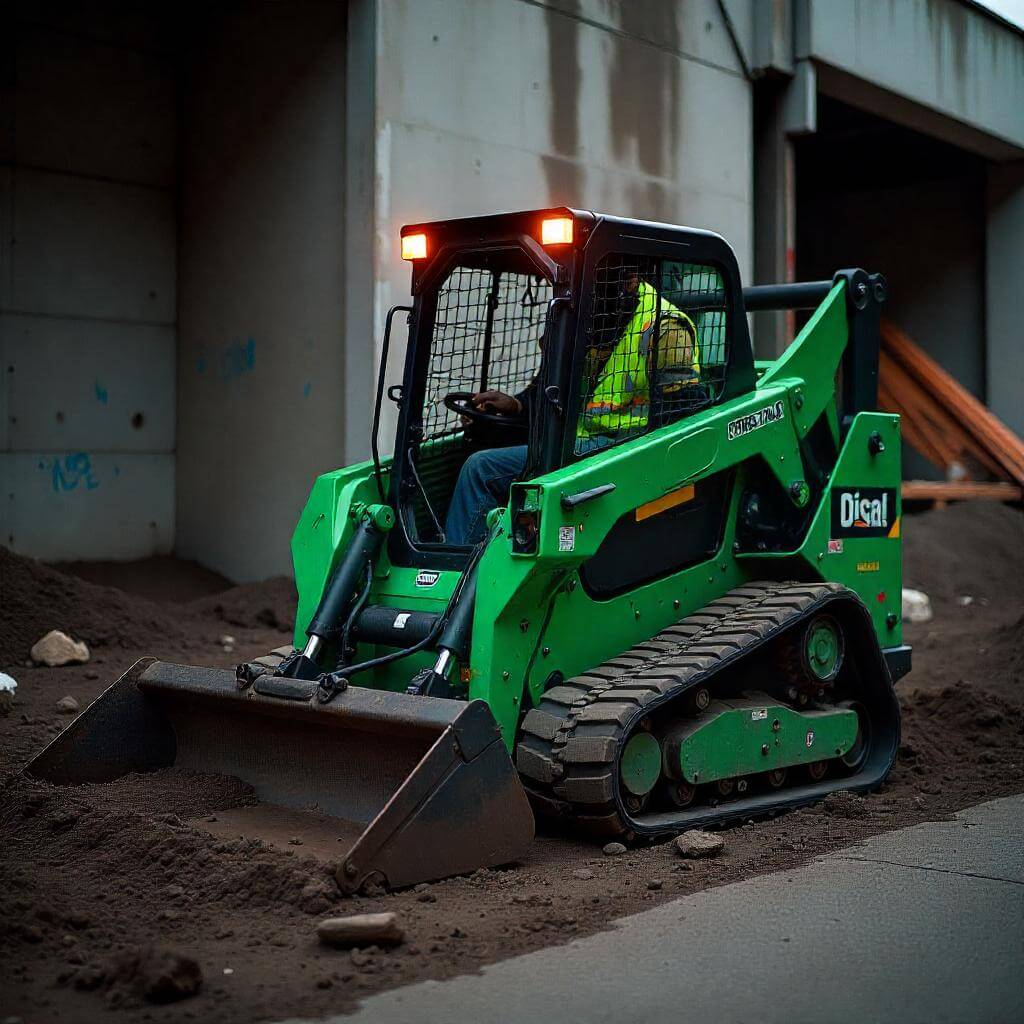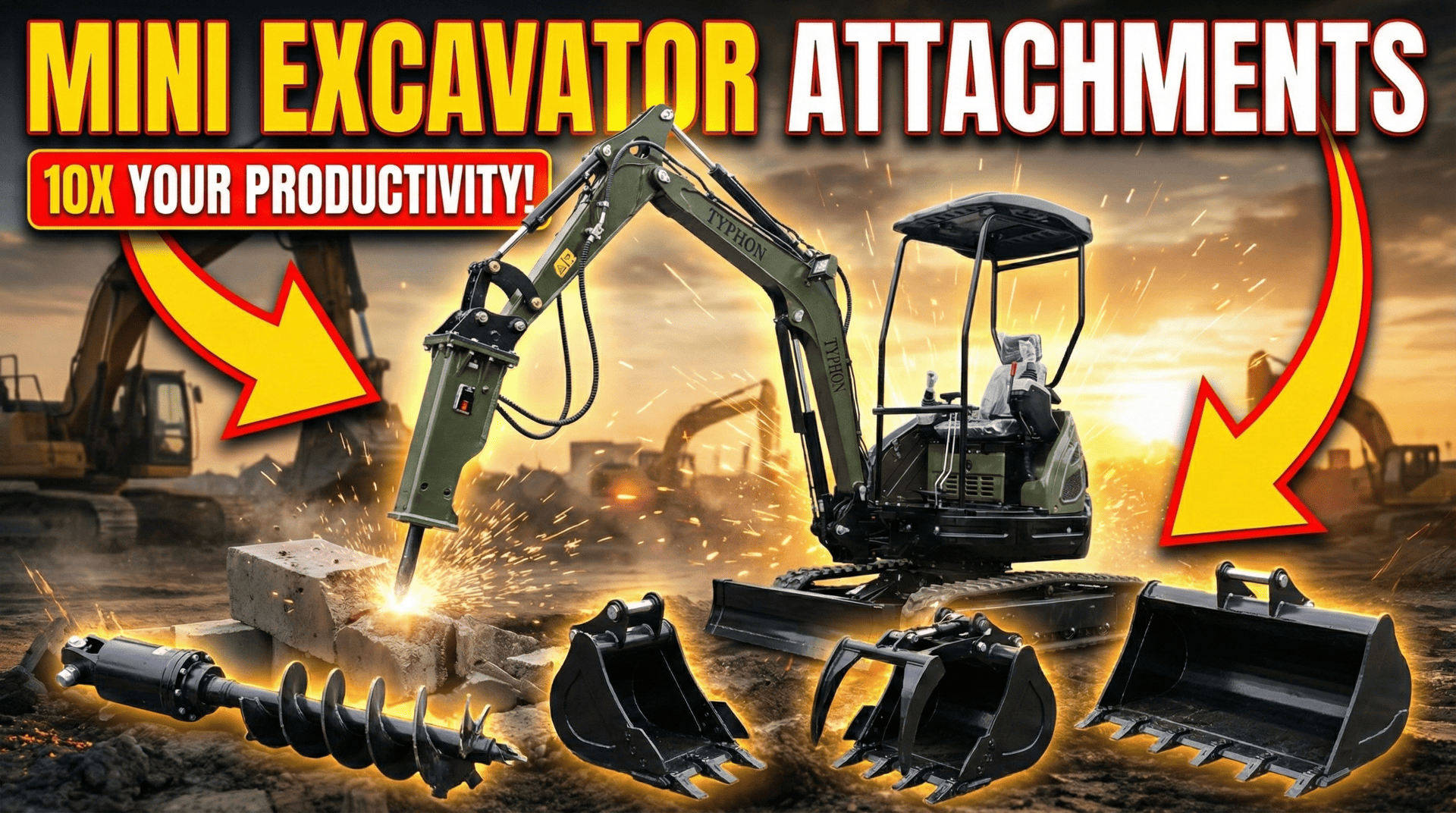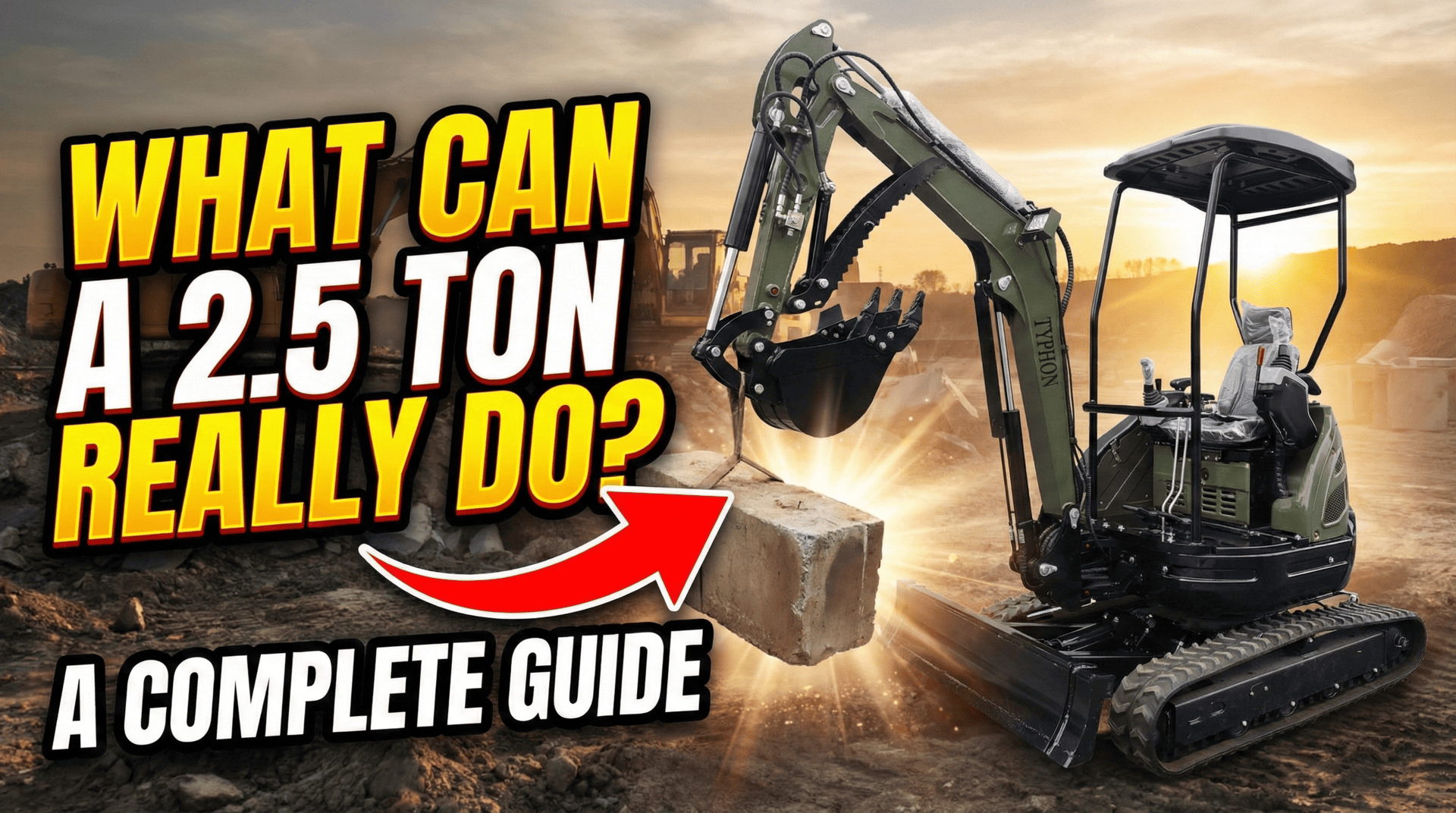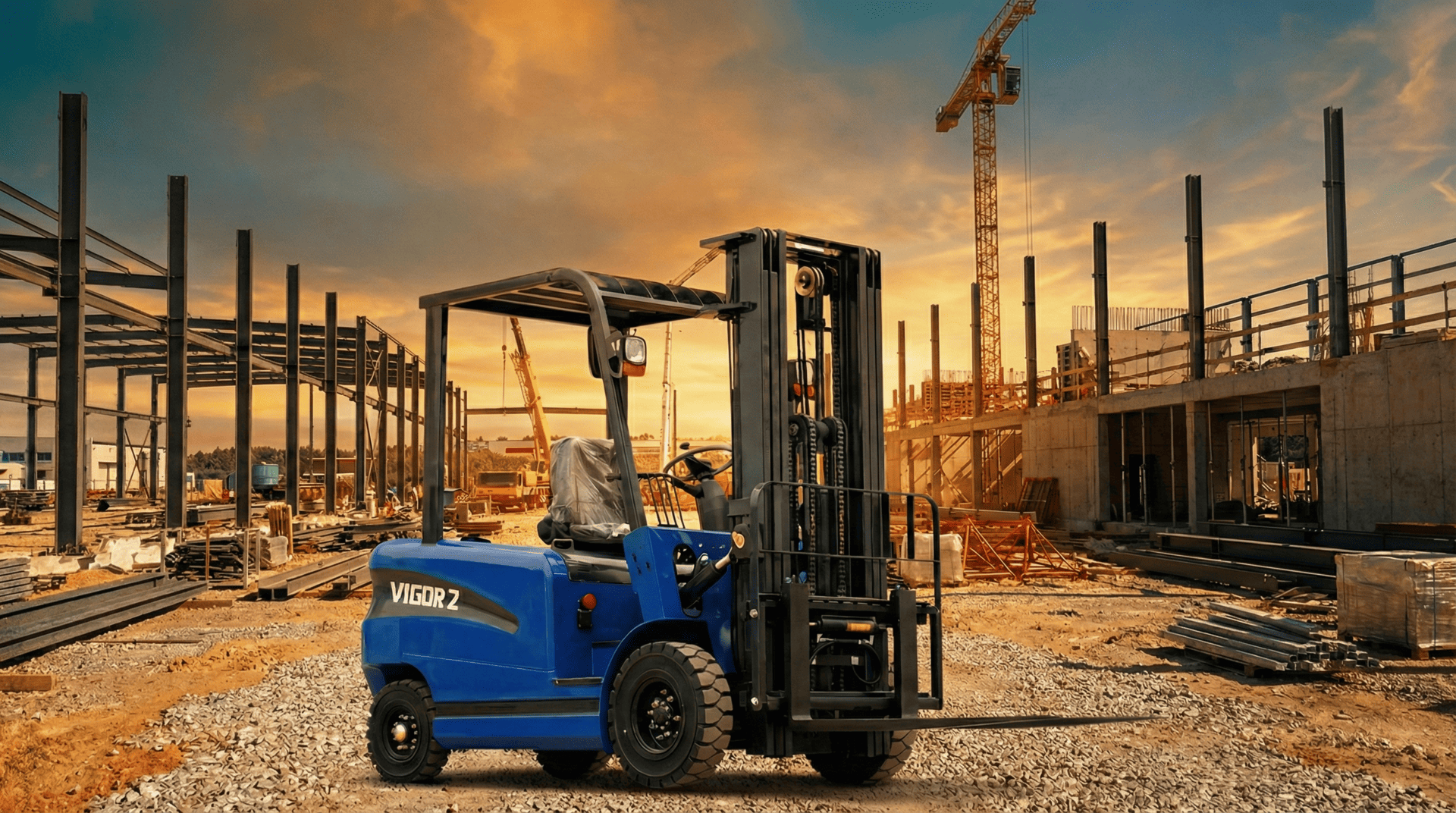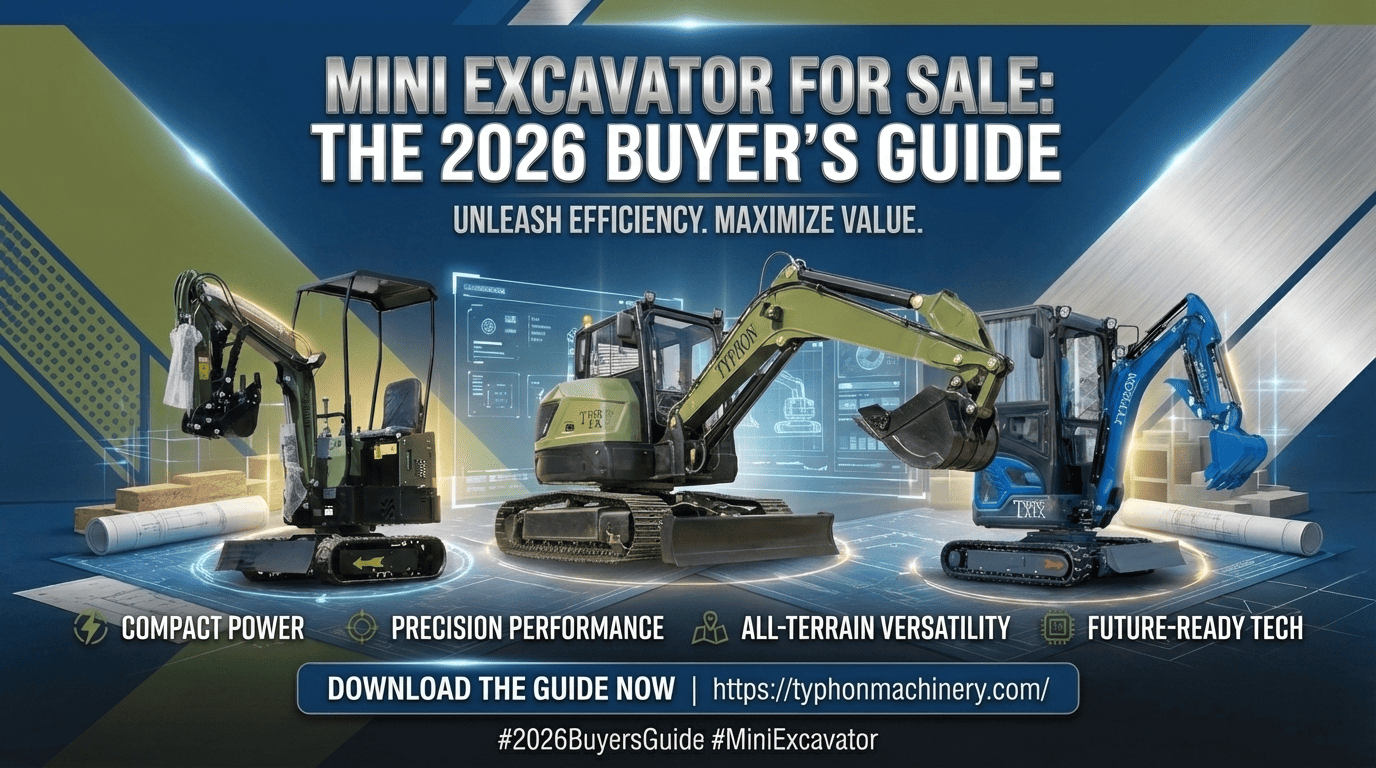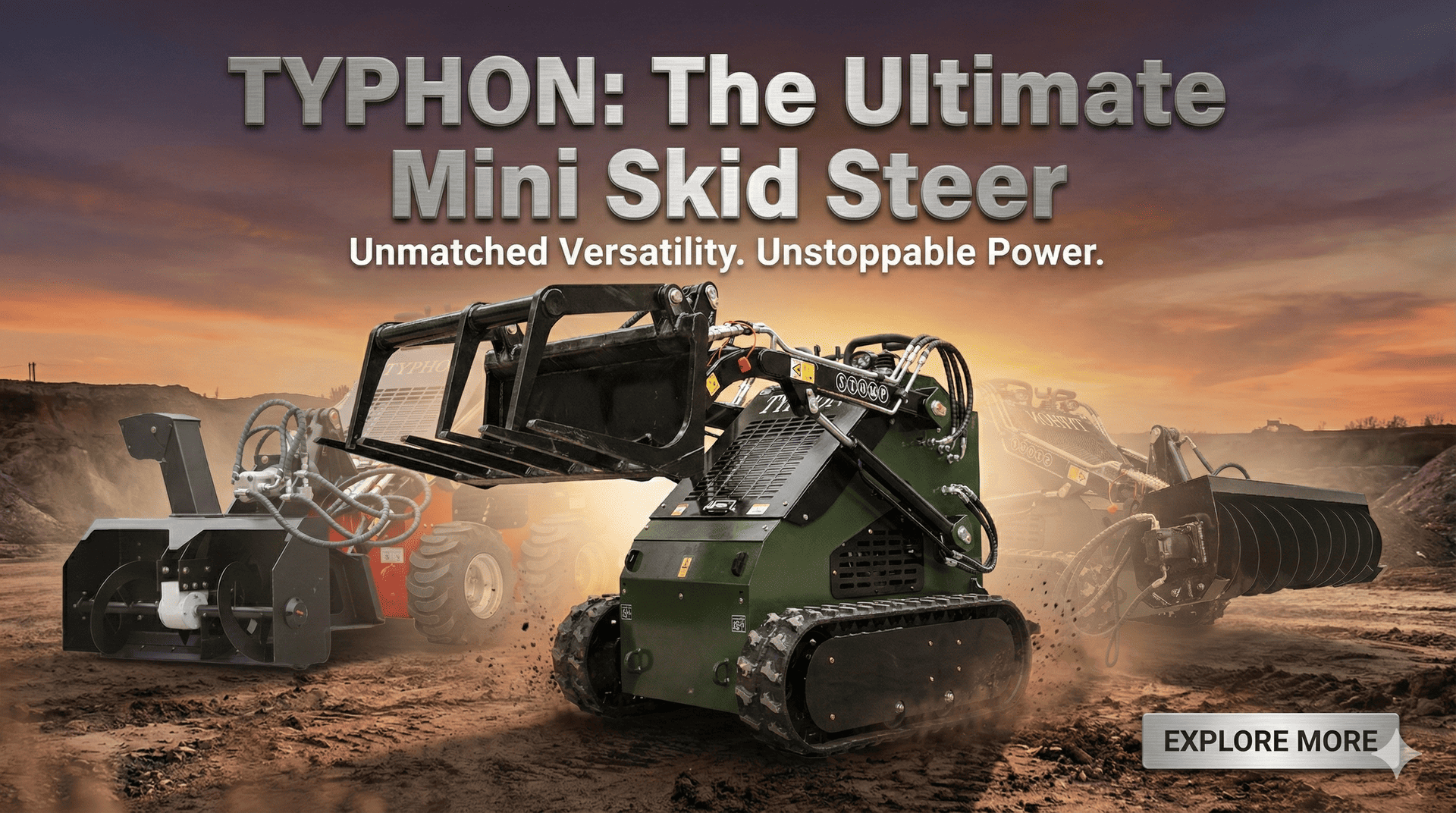With the right method and right attachments, your mini skid steer can handle grading projects more easily, quickly, efficiently, and safely, whether you’re using a Typhon mini skid steer or a different model to level ground.
Learning the Basics of Operating a Mini Skid Steer for Ground Leveling
Successfully leveling the soil with a mini skid steer without digging requires a primary understanding of a skid steer’s operating systems and the right attachments.
Can a mini loader be a game changer in Leveling Ground?
A loader is a perfect choice for ground-leveling sites for various reasons:
Maneuverability: Due to its lightweight, compact design it can perform many leveling tasks in tight spaces in all types of small-to-medium project sites.
Versatility: These mini loaders come in different models to accommodate a variety of terrain. You can get your desired results by selecting from multiple attachments.
Efficiency: Even though mini loaders are small in size, still they generate a high hydraulic flow rate to enable you to utilize attachments efficiently.
Visibility: Since they don’t have a bulky front loader & a small windscreen like other machines, skid steers let the operator view the ground clearly and perform leveling tasks more efficiently.
Adaptability: These mini loaders can adapt to various job sites, making them ideal for multiple leveling projects.
Some examples of skid steer applications include leveling gravel for driveways and parking lots or constructing a foundation for a home or a commercial building.
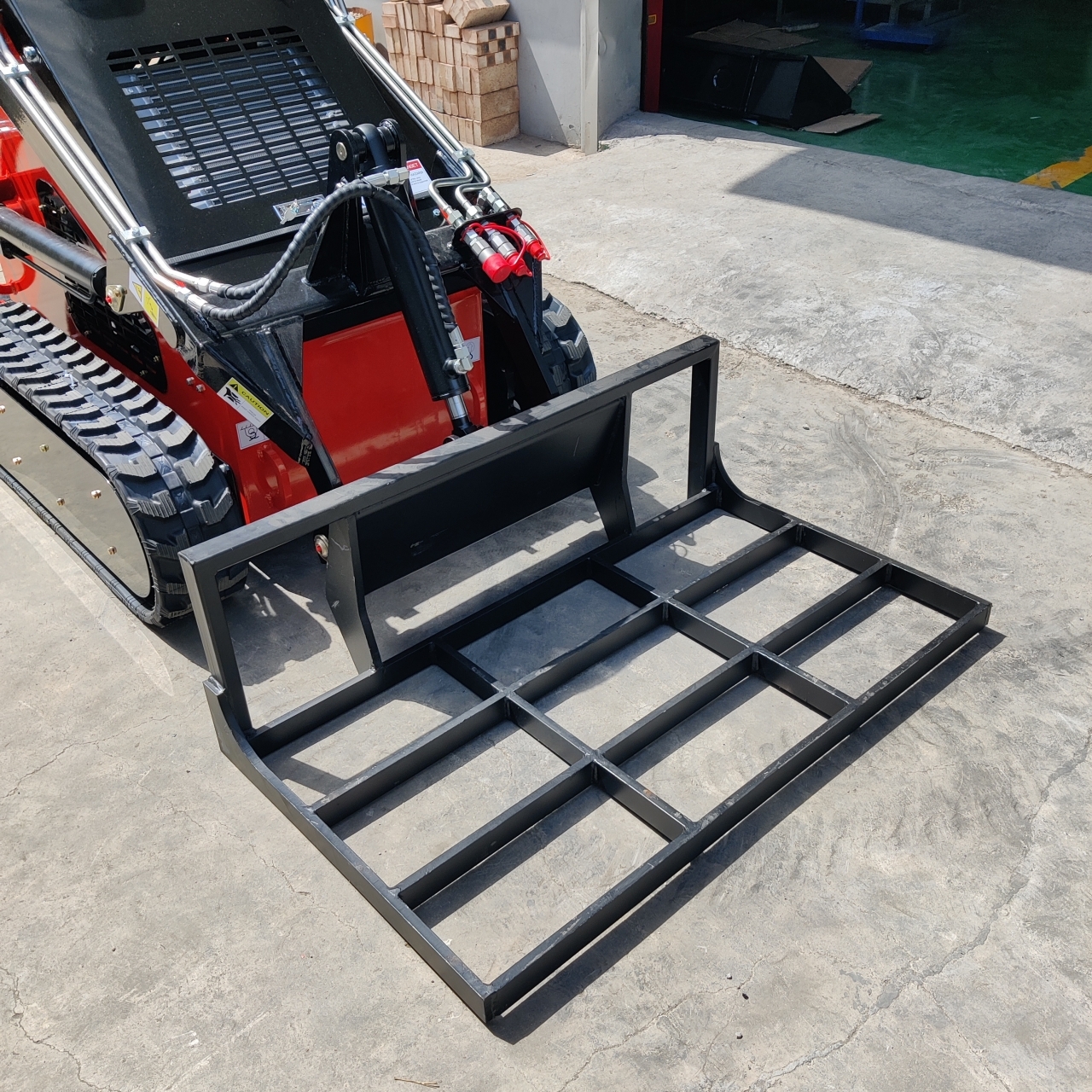
Safety Measures When Using a Skid Steer for Ground Leveling
Like any heavy equipment, it’s crucial to implement appropriate safety measures when operating loaders to avoid the two most significant dangers — rollovers and crushing from moving parts.
Conducting a pre-trip inspection is compulsory when using a skid steer for grading or ground leveling.
Some common things you should check before starting:
Tires: Tires play a very crucial role in machine operation. The machine’s tires should be in good condition and properly inflated.
Cab: Some loader models have side screens to protect against moving parts and a Cab to prevent rollover injuries. These should be intact and free of damage.
Grab handles: Check for worn-out grips that cause a loose grip of the operator and result in falls or a loss of control of the machine.
Steps: To eliminate the risk of slip & fall incidents, clear the steps of ice, snow, mud, or other debris.
Attachments: Before operating the machine make sure the bucket or other attachments are appropriate for the specific skid steer model and are mounted and connected correctly.
Before operating the Mini Skid steer loader operators should also wear proper safety gear and follow the operating guidelines provided by the manufacturer for the machine’s make & model.

